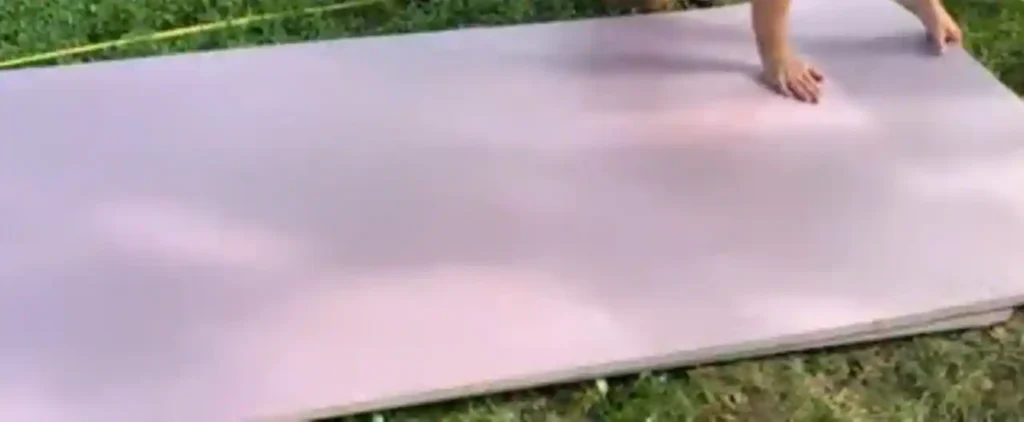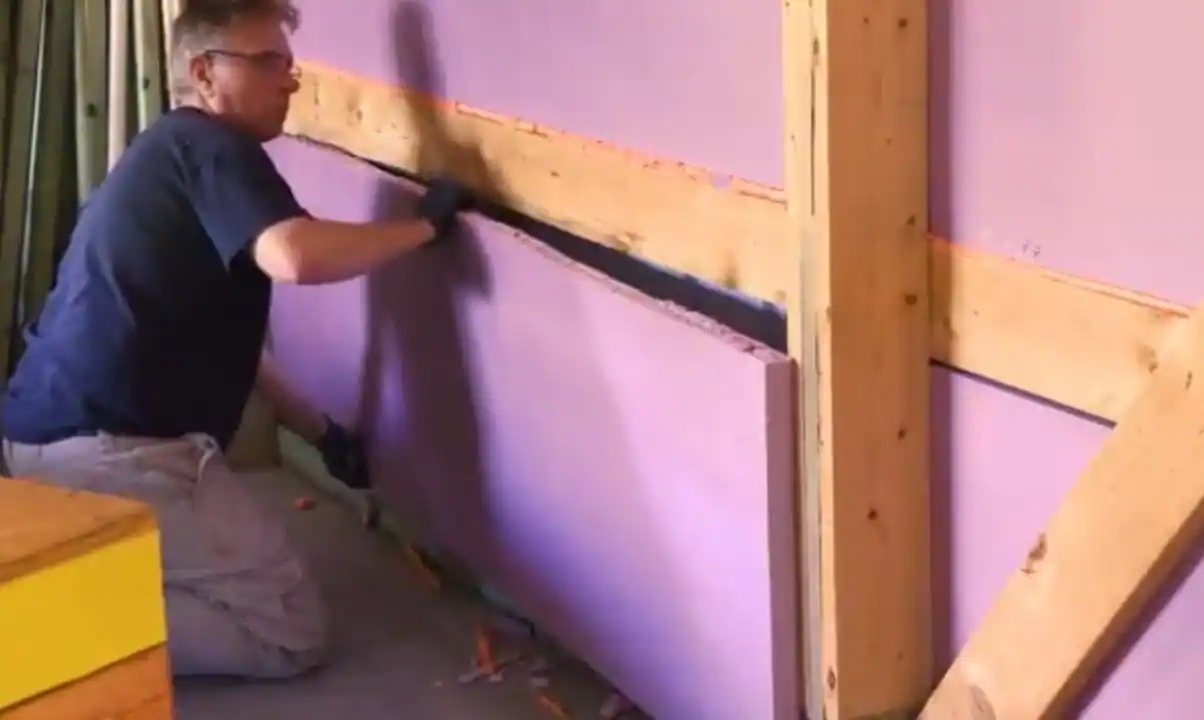How to install foam board insulation, is another important topic we like to share with you. Insulation plays a very vital role in maintaining the insider temperature, so we need to insulate any property with proper and accurate insulation material and method. We know there are so many insulations material available in the market in various thicknesses, sizes, and r values. In all that Rigid Foam Board Insulation, is one of the well-known and commonly used materials to insulate the exterior or internal wall.
So, here we are coming with the information about installing foam board insulation in, “How to install foam board insulation” in this post. So, if you are considering foam board or rigid board insulation to insulate the exterior or interior wall, you must read this post, the information in this post will be helpful to you. This insulation is easy to install like fanfold insulation, we shared information about how to install fanfold insulation, in this post.
An affordable and energy-efficient approach to increase your home’s insulation and weatherproofing is to install rigid foam board insulation on external walls, it is more beneficial. Rigid foam board insulation may be considerably known for lower heat loss and increased indoor comfort by forming a thermal barrier, which also lowers energy costs and carbon emissions.
The advantages of installing rigid foam board insulation on exterior walls, the various kinds of foam boards that are readily available, and detailed installation instructions will all be covered in this blog. This article will give you the crucial knowledge and then you need to begin your insulation project, whether you are a DIY enthusiast or a seasoned contractor.
Foam Board Insulation Pros and Cons
As we all the pros and cons of any insulation material will impact the selection of material, so you have a need to consider all the advantages and disadvantages of that product before selecting and using it. For clearing all the pros and cons of using this Rigid board or foam board insulation, you like to focus on the pros and cons of Foam Board Insulation. Let us read on-
In this passage, we try to explore the information about, which advantage you will get by using rigid board insulation.
There are various advantages to installing rigid foam board insulation on a building’s outside walls, including:
More energy efficiency – foam board insulation pros and cons
Rigid foam board insulation can drastically lessen heat loss through the walls, which can minimize energy usage and heating costs, that is why it is more energy efficient and commonly used.
Better comfort- foam board insulation pros and cons
Rigid foam board insulation can assist keep temperatures more evenly distributed throughout a structure by lowering heat loss through the walls and because of that it will able to provide more comfort.
Less condensation
Installing insulation to exterior walls can aid in reducing condensation, which can cause moisture damage and mild growth on walls and inside wall cavities. In this manner, it will help in less condensation.
More toughness
Rigid foam board insulation can help shield outside walls from deterioration brought on by moisture, temperature swings, and other environmental variables, potentially extending the life of the structure.
Improved noise reduction
Rigid foam board insulation can help to lessen the amount of noise that enters the building from the outside and result in a quieter inside atmosphere, which means it provides soundproofing quality.
Rigid foam board insulation can be used on outside walls to improve energy efficiency, comfort, durability, and noise reduction, among other things. To prevent any potential concerns with moisture build-up or other issues, it is crucial to make sure the installation is done correctly. Now we will see, which equipment’s needed for the installation of rigid foam board insulation.
Equipment and tools for installing the rigid foam board insulation

The following supplies and equipment are required to use rigid foam board insulation to insulate an outside wall:
Materials
• Insulation made of rigid foam board: Options for this type of insulation include polystyrene, polyurethane, and polyisocyanurate. The intended R-value and climate zone will determine the insulation’s thickness.
• Adhesive: To connect the foam board to the wall, you will need strong glue. Foam board adhesive and construction adhesive are a couple of alternatives.
• Screws or nails: To fix the foam board insulation to the wall, you will need fasteners. Employ screws or nails that are at least one inch greater in length than the insulation thickness.
• Foam board tape: Seal the gaps around windows and doors and the joints where the foam board insulation panels meet.
• House wrap or moisture barrier: To stop water from penetrating the insulation, you’ll need a moisture barrier. An appropriate choice is house wrap or a moisture barrier.
Tools for installing rigid foam insulation
• Measuring tape: Determine the required amount of insulation by measuring the length and width of the wall.
• Utility knife or saw: To cut the foam board insulation to the right size, you will need a utility knife or saw.
• Hammer or drill: Drive the screws or nails into the wall using a hammer or a drill.
• Caulking gun: Apply glue to the foam board insulation’s back using a caulking gun.
• Straight edge: Cut the foam board insulation precisely with a straight edge.
Safety equipment Before handling the insulation and cutting equipment, put on protective gloves, eye protection, and a dust mask.
How to install foam board insulation and how to install foam board insulation on interior walls
The main procedures for installing rigid foam board insulation on outside walls are as follows:
Step first- measure the area

Take measurements of the space where the foam board insulation will be installed. You can use this to estimate how much material you will need.
Step second -selection of material
Choose the best foam board insulation type for your project. Expanded polystyrene (EPS), extruded polystyrene (XPS), and polyisocyanurate (polio) are a few examples of distinct foam board insulation types. Each has a unique R-value (a measure of heat resistance) as well as other characteristics.
Step third- clear the area- installing rigid foam insulation
Get the wall surface ready. Clean the wall’s surface and, if necessary, remove any existing insulation. Fix any damage or cracks, then check to see that the surface is even and smooth.
Step forth- how to attach foam board insulation
Put in the insulation made of foam board. The board should be given a bead of foam adhesive on the back before being pressed firmly to the wall. To hold the board in place, use mechanical fasteners (such as screws or nails). With the other boards, carry out the same procedure, butting the edges firmly together to prevent gaps.
When required, cut, and shape the foam board insulation. To shape the boards to fit around windows, doors, and other obstructions, use a sharp utility knife or saw.
Step fifth- sealing process – how to install foam board insulation
Seal the foam board insulation’s edges and seams. To stop air leakage and moisture infiltration, caulk or tape should be used to seal the edges and gaps of the boards. Cover the insulation with a weather-resistant barrier. This could be house wrap, construction paper, or another substance that shields the insulation from the weather.
Step sixth- add exterior cladding
Add siding, stucco, or other exterior cladding to the wall to complete it. To stop water intrusion, ensure that the cladding is correctly placed and sealed. This process will make your insulation more beneficial. This is the last step of how to install foam board insulation.
When placing foam board insulation on outside walls, adhering to the manufacturer’s instructions, and building requirements is crucial.
The bottom line of, How to install foam board insulation, installing rigid foam insulation
In conclusion, rigid foam board insulation can provide homeowners with a host of advantages when used to insulate exterior walls. Insulation made of rigid foam board can increase energy efficiency, lower heating, and cooling costs, and improve indoor comfort. Also, it can increase the structure’s resilience and add another layer of moisture defines.
To ensure good sealing and to avoid any potential problems, such as moisture build-up or air leaks, it is crucial to remember that professionals should carry out the installation. An important investment that might pay off in the long run by lowering energy costs and raising the home’s total value is proper external wall insulation.
Should you glue foam board insulation?
Yes, foam board insulation can be installed using glue, which is both common and efficient. The performance of the insulation is improved overall because of the secure, continuous, and airtight barrier that is created by gluing the foam boards. Using the proper glue is essential to guaranteeing a strong and long-lasting installation because there are specific adhesives made just for foam board insulation.
Several important factors and procedures for adhering to foam board insulation are listed below:
Use the Proper Adhesive-
Foam board insulation is not a good fit for all adhesives. Look for adhesives that are expressly labeled as being compatible with foam materials, such as construction glue or foam board adhesive. These adhesives often offer a solid bind while being stretchable to allow for the foam’s normal expansion and contraction.
Surface Preparation-
Before using or applying the adhesive, you need to make sure about the surfaces are dust- and debris-free, clean, and dry. A strong and long-lasting bond can only be achieved with the proper surface preparation.
Apply the Adhesive-
Apply the Adhesive on the surface properly according to the instructions of the manufacturers. Typically, you’ll cover one side of the foam board with a uniform, thin amount of adhesive. The adhesive is typically applied to the back of the foam board in vertical beads or lines for vertical installations.
Press and hold-
Press firmly against the surface you want the foam board to cling to after applying the glue. Hold it there for a short while to let the adhesive solidify. You might need to use temporary supports or braces to hold the foam board in place while the adhesive cures completely, depending on the type of adhesive that was used.
Caulking and patching-
Use foam board caulk or foam sealant to fill in any minor cracks or voids and produce a smooth insulation covering.
It is advised to get advice from a qualified contractor with experience installing foam board insulation if you require assistance or have questions about the installation procedure. The effectiveness of the insulation and your home’s overall energy efficiency must be maximized through proper installation.
Do let us know how you feel about this information by commenting.
Like our Facebook page and follow for other updates like this.

